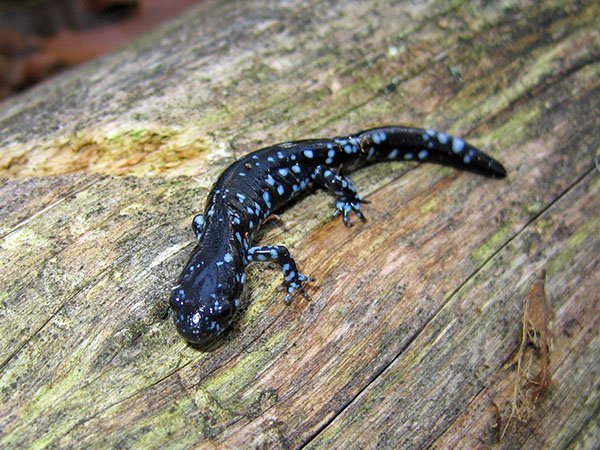Amphibian: The Transition from Fish to Reptile?
Greg Schechter, CC BY 2.0, via Wikimedia Commons
Hall of Life—Reptile and Amphibian Exhibits
on April 25, 2016Amphibian characteristics are claimed to be intermediate between fish and reptiles. However, there are several major hurdles that need to be overcome in order for this supposed evolutionary transformation to happen: skin needs to change, amniotic egg needs to develop, lungs need to advance and change.
Amphibian skin contains many different glands that are not present in the reptile skin, and the reptilian scales develop from folds in the skin. So not only would amphibians need to develop the genetic information for glands (not found in fish), reptiles would also need to develop the genetic information for scales. Again, a process that increases the information content of the genome has not been observed scientifically.
Amphibians absorb and release gases through their skin as part of their respiration. Their thin, permeable skin would need to develop into the thick, waterproof skin of reptiles; so another developmental pathway would have to appear. The amphibian skin would need to lose the ability to exchange gases, and a complex lung system would need to develop in order for the “emerging” reptiles to accommodate life on dry land.

By Greg Schechter [CC BY 2.0 (http://creativecommons.org/licenses/by/2.0)], via Wikimedia Commons
Blue-Spotted Salamander
Amphibians must lay their eggs in wet environments to prevent them from drying out. Reptile eggs have a leathery covering that prevents loss of water but still allows gases to be exchanged with the environment. There is no record of the molecular and developmental changes that would have had to occur to make this transition.
Fossil and genetic evidence support the biblically-based fact that amphibians have always been amphibians and reptiles have always been reptiles—both groups were created by the Creator to inhabit the earth.
Many now-fossilized amphibians may have lived in a now-extinct floating forest ecosystem before the Flood. These unique ecosystems may have been destroyed and buried during the Flood to form thick coal seams we find in the rock record today. (K. Wise, “The Pre-Flood Floating Forest,” Proceedings of the Fifth International Conference on Creationism, Creation Science Fellowship, 2003, pp. 371–381)
Related Media
Creation Museum: Poison Dart Frogs
Related Downloads
Poison Dart Frog—Drop Dead Gorgeous
Audio DownloadMuseum Guide
Are you exasperated by all the hype about "millions of years" in secular museums? The Museum Guide will help!
Browse Kids BookRecommended Resources
- © 2024 Answers in Genesis
- Privacy Policy
- Contact
- About


